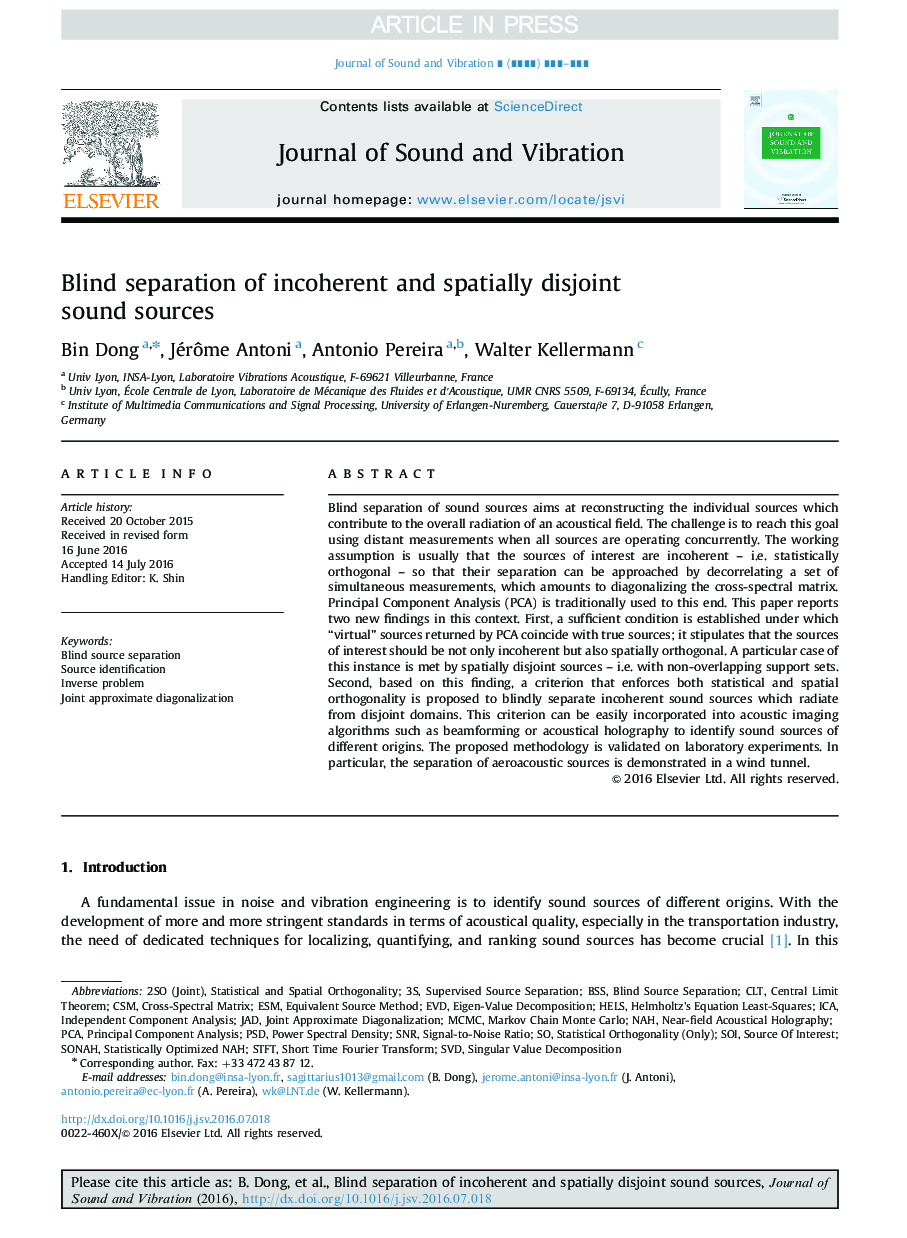| کد مقاله | کد نشریه | سال انتشار | مقاله انگلیسی | نسخه تمام متن |
|---|---|---|---|---|
| 4924455 | 1430850 | 2016 | 32 صفحه PDF | دانلود رایگان |
عنوان انگلیسی مقاله ISI
Blind separation of incoherent and spatially disjoint sound sources
ترجمه فارسی عنوان
جداسازی کلاسی از منابع صوتی غیر متمرکز و فضای مجاز
دانلود مقاله + سفارش ترجمه
دانلود مقاله ISI انگلیسی
رایگان برای ایرانیان
کلمات کلیدی
SNRJADMCMCJoint approximate diagonalizationEquivalent source methodCSMSTFTBSSCLTEVDSVDICAESMSOIPSDPCA - PCAsingular value decomposition - تجزیه مقدار منفردIndependent component analysis - تجزیه و تحلیل جزء مستقلPrincipal component analysis - تحلیل مولفههای اصلی یا PCAPower spectral density - تراکم طیفی قدرتBlind source separation - تفکیک منبع کورMarkov chain Monte Carlo - زنجیره مارکف مونت کارلوSource identification - شناسایی منبعCentral limit theorem - قضیه حد مرکزیInverse problem - مشکل معکوسNAH - ناخنSignal-to-noise ratio - نسبت سیگنال به نویزShort time Fourier transform - کوتاه مدت تبدیل فوریه
موضوعات مرتبط
مهندسی و علوم پایه
سایر رشته های مهندسی
مهندسی عمران و سازه
چکیده انگلیسی
Blind separation of sound sources aims at reconstructing the individual sources which contribute to the overall radiation of an acoustical field. The challenge is to reach this goal using distant measurements when all sources are operating concurrently. The working assumption is usually that the sources of interest are incoherent - i.e. statistically orthogonal - so that their separation can be approached by decorrelating a set of simultaneous measurements, which amounts to diagonalizing the cross-spectral matrix. Principal Component Analysis (PCA) is traditionally used to this end. This paper reports two new findings in this context. First, a sufficient condition is established under which “virtual” sources returned by PCA coincide with true sources; it stipulates that the sources of interest should be not only incoherent but also spatially orthogonal. A particular case of this instance is met by spatially disjoint sources - i.e. with non-overlapping support sets. Second, based on this finding, a criterion that enforces both statistical and spatial orthogonality is proposed to blindly separate incoherent sound sources which radiate from disjoint domains. This criterion can be easily incorporated into acoustic imaging algorithms such as beamforming or acoustical holography to identify sound sources of different origins. The proposed methodology is validated on laboratory experiments. In particular, the separation of aeroacoustic sources is demonstrated in a wind tunnel.
ناشر
Database: Elsevier - ScienceDirect (ساینس دایرکت)
Journal: Journal of Sound and Vibration - Volume 383, 24 November 2016, Pages 414-445
Journal: Journal of Sound and Vibration - Volume 383, 24 November 2016, Pages 414-445
نویسندگان
Bin Dong, Jérôme Antoni, Antonio Pereira, Walter Kellermann,
